In the Fall 1985 issue of Automobile Quarterly John F. Katz recounted the history of a particular Stoddard Dayton owned by Carl G. Fisher, undoubtedly one of the most prolific, ingenious, far-sighted men of industry and commerce in the early years of the 20th century. It seems, according at least to the Indianapolis Motor Speedway Museum which owns a Stoddard Dayton Model 9A which they believe may have belonged to Fisher, that Fisher had a special affection for the Stoddard family’s products. Unlike many automobile entrepreneurs, Fisher’s accomplishments still resound today. He made his (first) fortune with the Prest-o-Lite acetylene gas tank which fueled the lights on many early automobiles. He headed the syndicate that built the Indianapolis Motor Speedway. He later turned his attention to the development of resort real estate, aided by two highways which he helped promote, the east-west Lincoln Highway and the north-south Dixie Highway. Fisher bought large tracts in attractive seaside locations and creating the infrastructure of roads and utilities which attracted and supported residential construction. His first venture was Miami Beach which Fisher laid out on the barrier island off the city of Miami. It was followed by Montauk, on the tip of Long Island’s South Fork. Word has it that Fisher scouted the route of the Lincoln Highway from the driver’s seat of a Stoddard Dayton. He also entered one in the first race held at the Indianapolis Motor Speedway and used another, his personal car, to pace both the first race in 1909 and the first Indianapolis 500 Mile race in 1911. The Stoddard Dayton performance in the August 14-16, 1909 festival at the new Speedway was outstanding. Two Model 9F cars with H.J. Edwards’ single camshaft hemispherical combustion chamber engine were entered and they finished one-two in the 5- and 50-mile races while in the feature races for larger displacement cars one of them finished third. Edwards’ design for the Stoddard Dayton Model 9’s engine was novel and, particularly with the technology of the time, ingenious. A monobloc four with the head cast integrally with the cylinder block, the Stoddard Dayton was one of the first automobiles to use inclined valves and hemispherically-shaped combustion chambers. The ground-breaking twin cam Peugeots of 1913 were still four years in the future when Edwards recognized the superiority of inclined valves, hemispherical combustion chambers and cross flow breathing at Stoddard Dayton in 1909. He employed a curious valve actuation system which employed only one camshaft and one rocker arm per cylinder to control both the intake and exhaust valves. The long rocker arms were pivoted in the center of the cylinder head with the camshaft in the crankcase on the intake side. The exhaust valve was actuated against spring pressure by the rocker arm pushing down. The intake valve, however, was pulled open by a spring on the pushrod as the cam follower came to a recess on the camshaft. The pushrod, or now more accurately described as a pullrod, was securely fastened to the intake end of the rocker and the spring pulled it down while the rocker arm’s exhaust end lifted off the head of the valve. It eliminated four whole sets of mechanical components but at the cost of great frictional losses and wear on the camshaft and followers which proved to be unacceptable. Edwards used the Model 9 system only one year, replacing it in 1910 with a pair of camshafts in the crankcase and two sets of rocker arms that spanned the head, placing the exhaust cam on the intake side and the intake cam on the exhaust side. It vastly improved reliability and reduced mechanical losses so much that Stoddard Dayton raised the engine’s advertised horsepower from 40 to 50. Riley in England used a similar system until well into the 1950s with great success in both production engines and in competition. The valve gear, cast and machined in brass and bronze is all exposed on top of the Stoddard Dayton
In the Fall 1985 issue of Automobile Quarterly John F. Katz recounted the history of a particular Stoddard Dayton owned by Carl G. Fisher, undoubtedly one of the most prolific, ingenious, far-sighted men of industry and commerce in the early years of the 20th century. It seems, according at least to the Indianapolis Motor Speedway Museum which owns a Stoddard Dayton Model 9A which they believe may have belonged to Fisher, that Fisher had a special affection for the Stoddard family’s products. Unlike many automobile entrepreneurs, Fisher’s accomplishments still resound today. He made his (first) fortune with the Prest-o-Lite acetylene gas tank which fueled the lights on many early automobiles. He headed the syndicate that built the Indianapolis Motor Speedway. He later turned his attention to the development of resort real estate, aided by two highways which he helped promote, the east-west Lincoln Highway and the north-south Dixie Highway. Fisher bought large tracts in attractive seaside locations and creating the infrastructure of roads and utilities which attracted and supported residential construction. His first venture was Miami Beach which Fisher laid out on the barrier island off the city of Miami. It was followed by Montauk, on the tip of Long Island’s South Fork. Word has it that Fisher scouted the route of the Lincoln Highway from the driver’s seat of a Stoddard Dayton. He also entered one in the first race held at the Indianapolis Motor Speedway and used another, his personal car, to pace both the first race in 1909 and the first Indianapolis 500 Mile race in 1911. The Stoddard Dayton performance in the August 14-16, 1909 festival at the new Speedway was outstanding. Two Model 9F cars with H.J. Edwards’ single camshaft hemispherical combustion chamber engine were entered and they finished one-two in the 5- and 50-mile races while in the feature races for larger displacement cars one of them finished third. Edwards’ design for the Stoddard Dayton Model 9’s engine was novel and, particularly with the technology of the time, ingenious. A monobloc four with the head cast integrally with the cylinder block, the Stoddard Dayton was one of the first automobiles to use inclined valves and hemispherically-shaped combustion chambers. The ground-breaking twin cam Peugeots of 1913 were still four years in the future when Edwards recognized the superiority of inclined valves, hemispherical combustion chambers and cross flow breathing at Stoddard Dayton in 1909. He employed a curious valve actuation system which employed only one camshaft and one rocker arm per cylinder to control both the intake and exhaust valves. The long rocker arms were pivoted in the center of the cylinder head with the camshaft in the crankcase on the intake side. The exhaust valve was actuated against spring pressure by the rocker arm pushing down. The intake valve, however, was pulled open by a spring on the pushrod as the cam follower came to a recess on the camshaft. The pushrod, or now more accurately described as a pullrod, was securely fastened to the intake end of the rocker and the spring pulled it down while the rocker arm’s exhaust end lifted off the head of the valve. It eliminated four whole sets of mechanical components but at the cost of great frictional losses and wear on the camshaft and followers which proved to be unacceptable. Edwards used the Model 9 system only one year, replacing it in 1910 with a pair of camshafts in the crankcase and two sets of rocker arms that spanned the head, placing the exhaust cam on the intake side and the intake cam on the exhaust side. It vastly improved reliability and reduced mechanical losses so much that Stoddard Dayton raised the engine’s advertised horsepower from 40 to 50. Riley in England used a similar system until well into the 1950s with great success in both production engines and in competition. The valve gear, cast and machined in brass and bronze is all exposed on top of the Stoddard Dayton
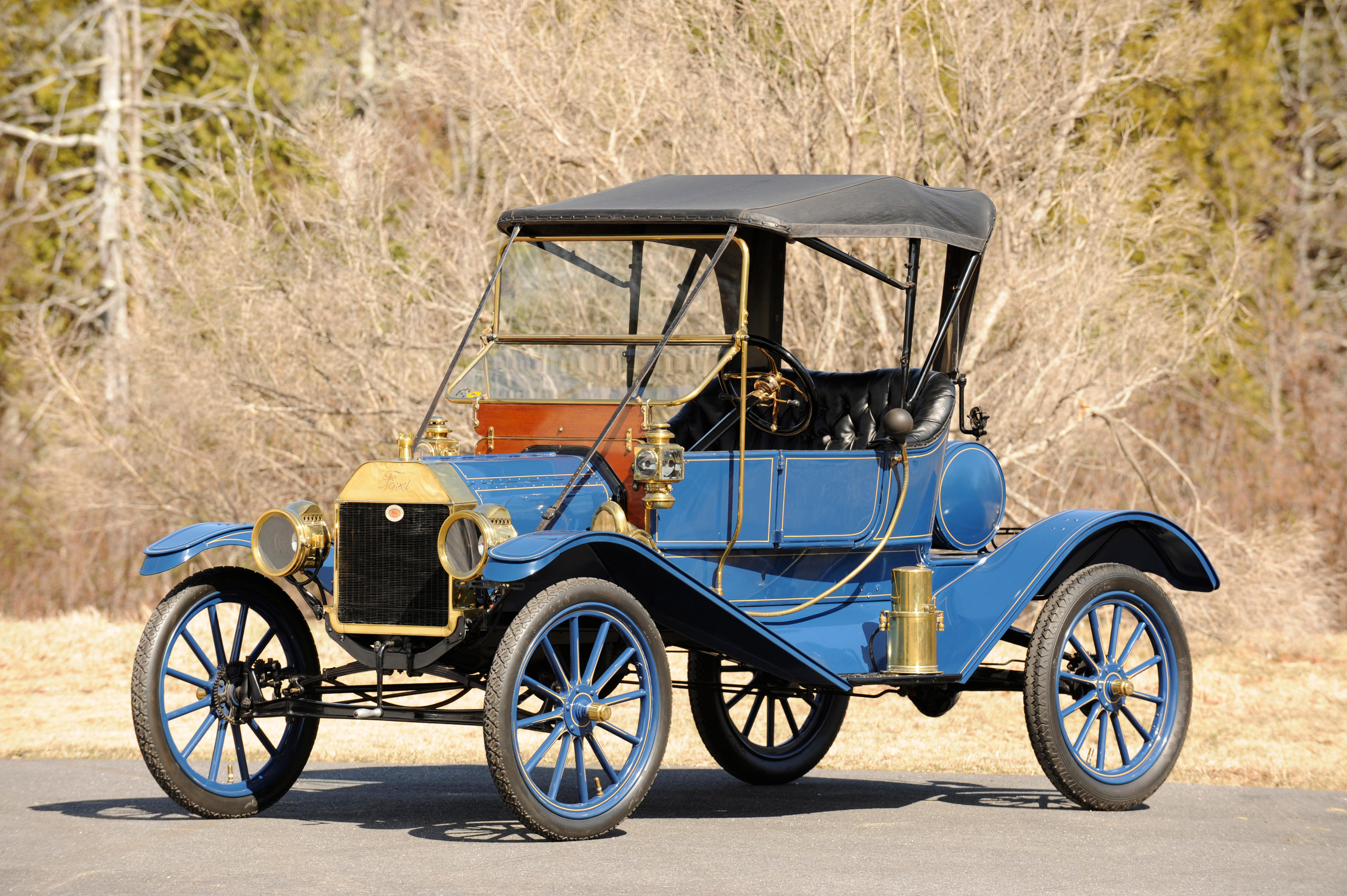

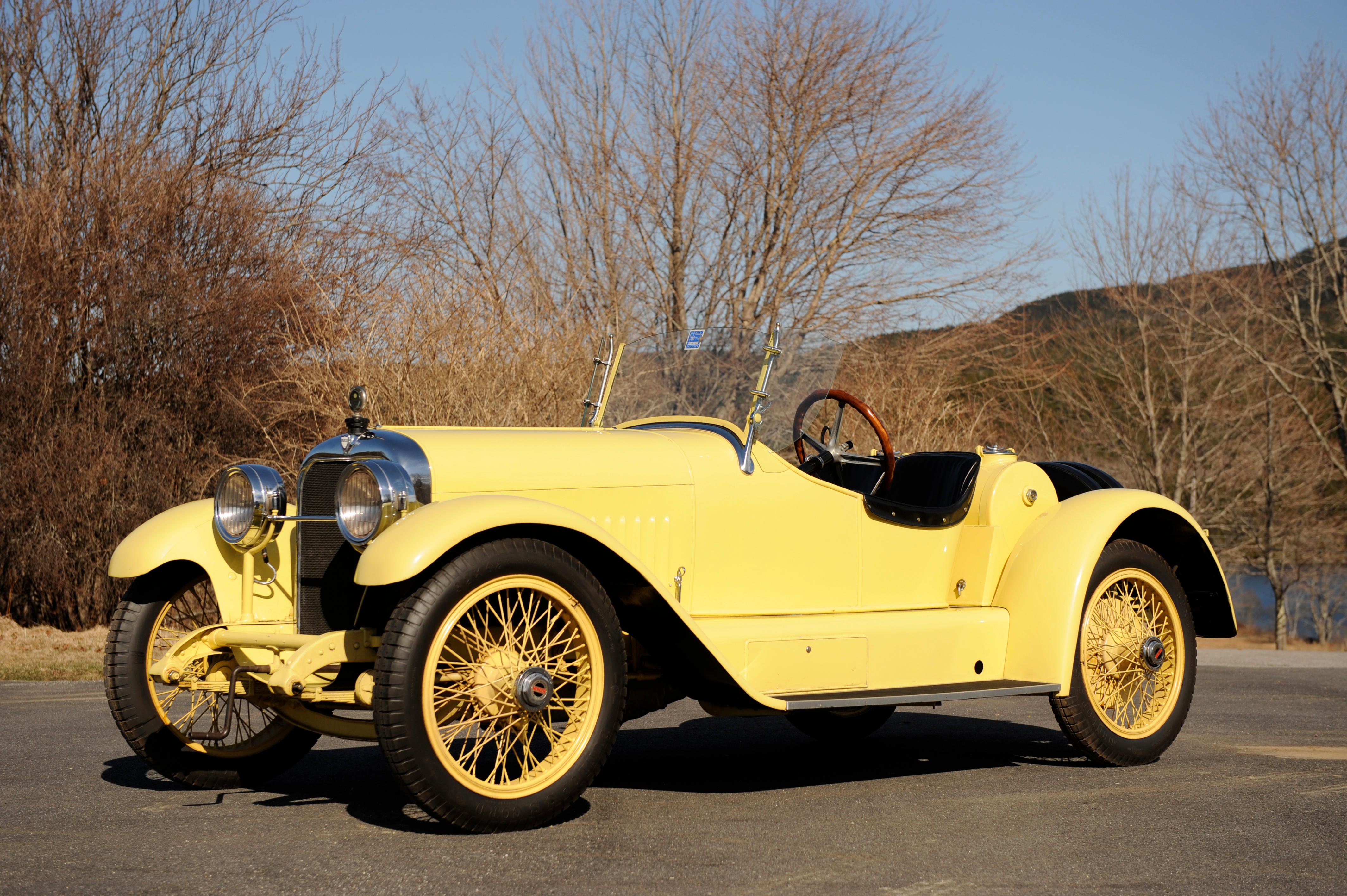
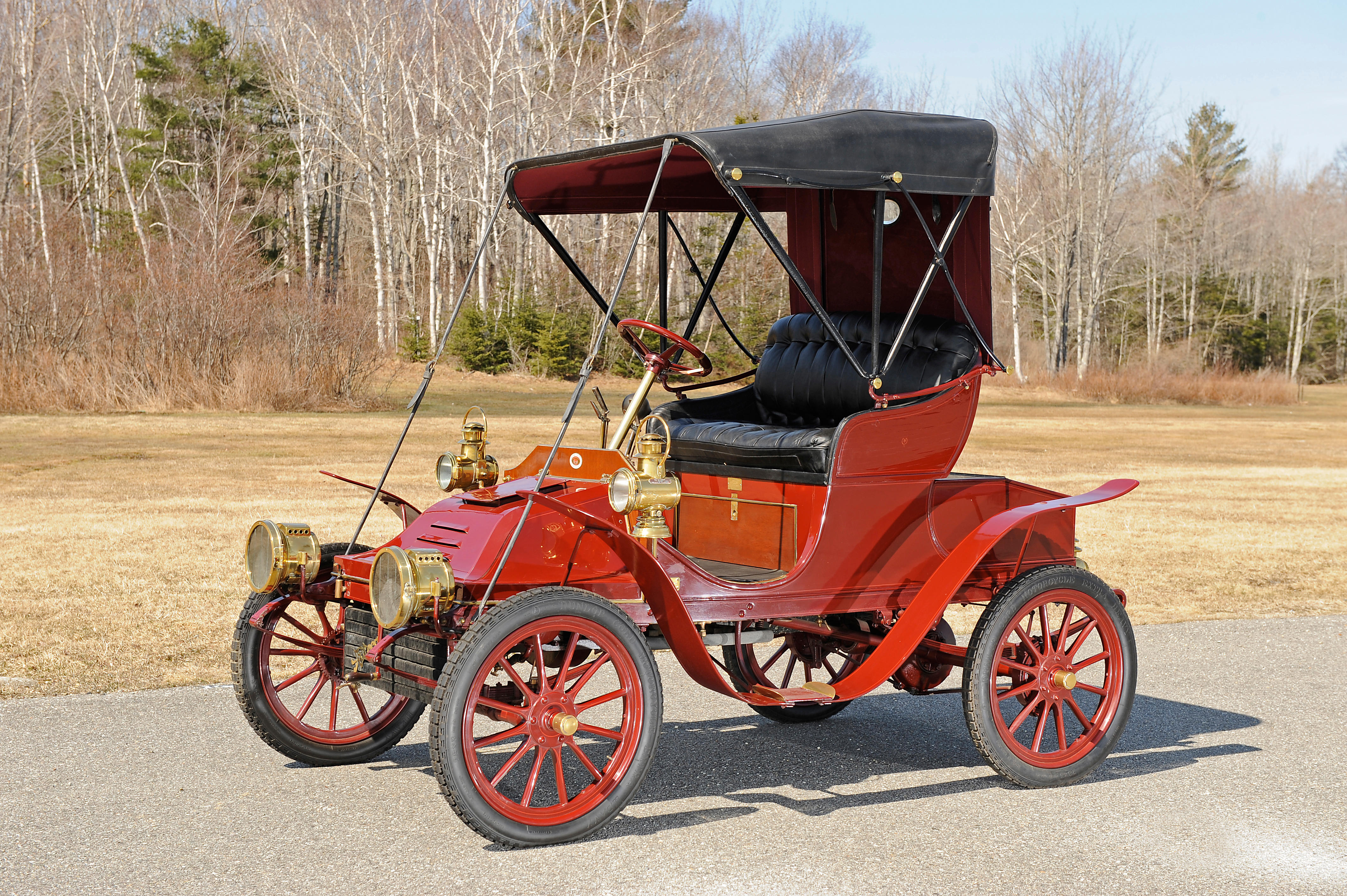

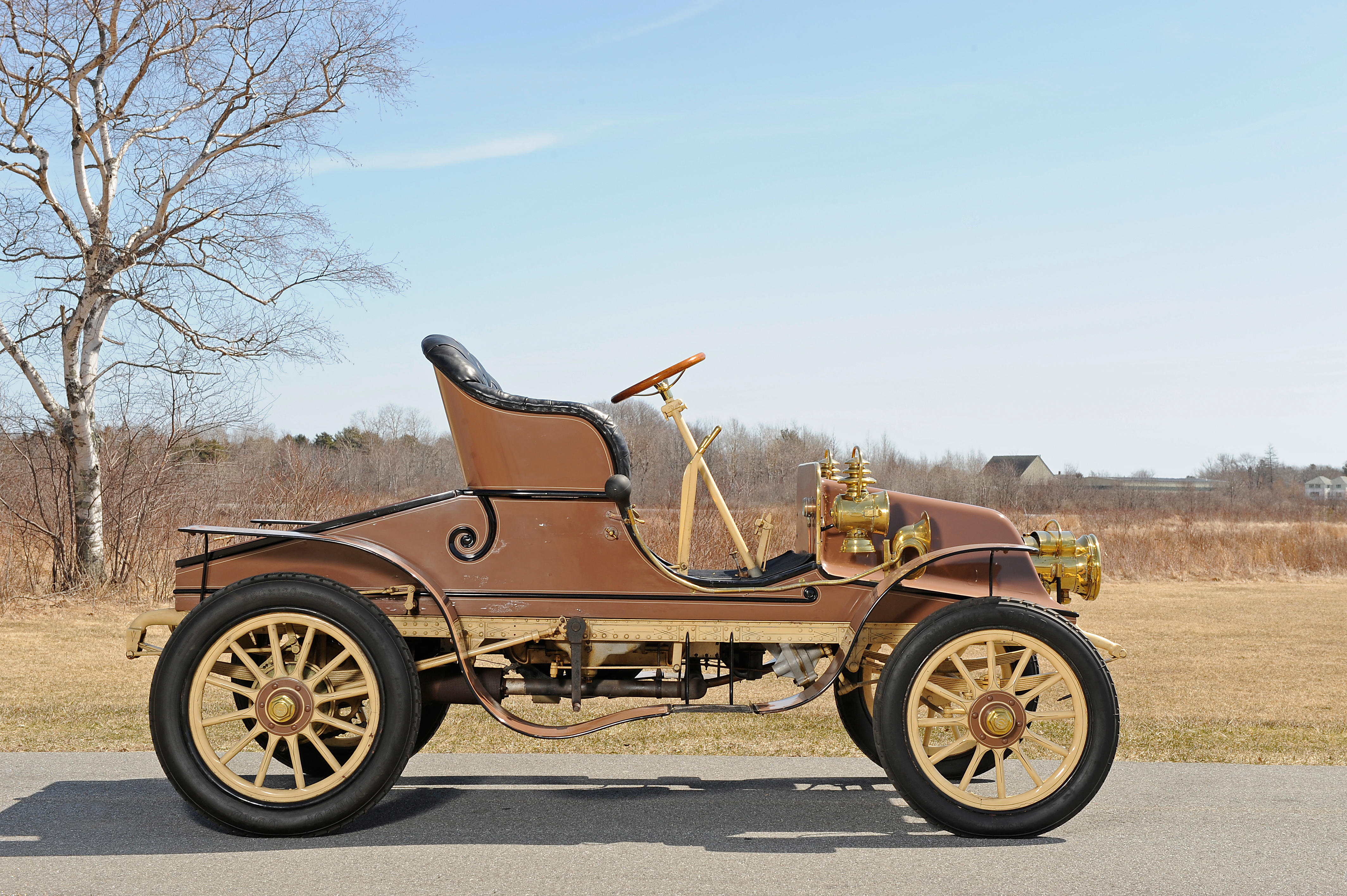
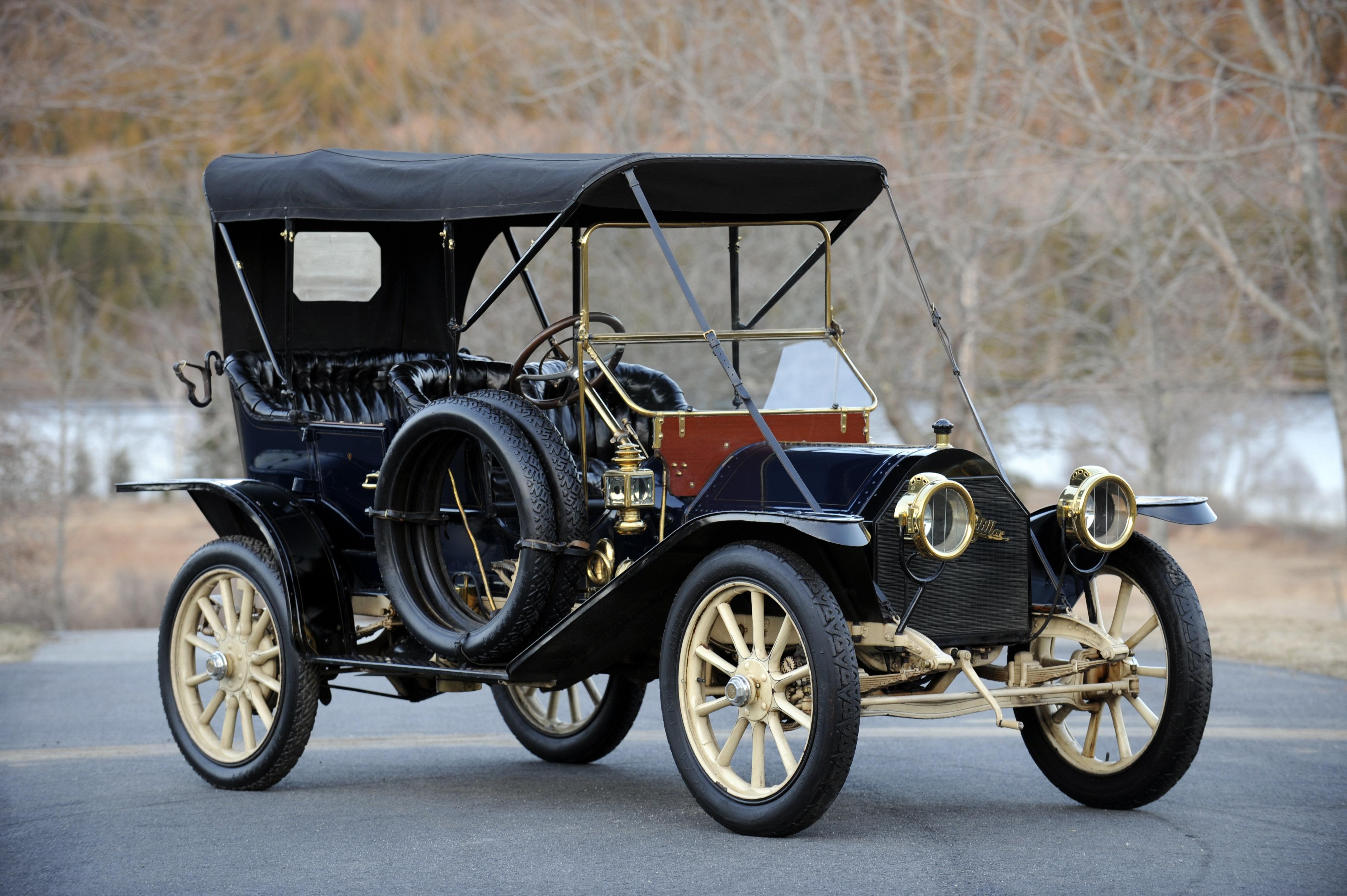


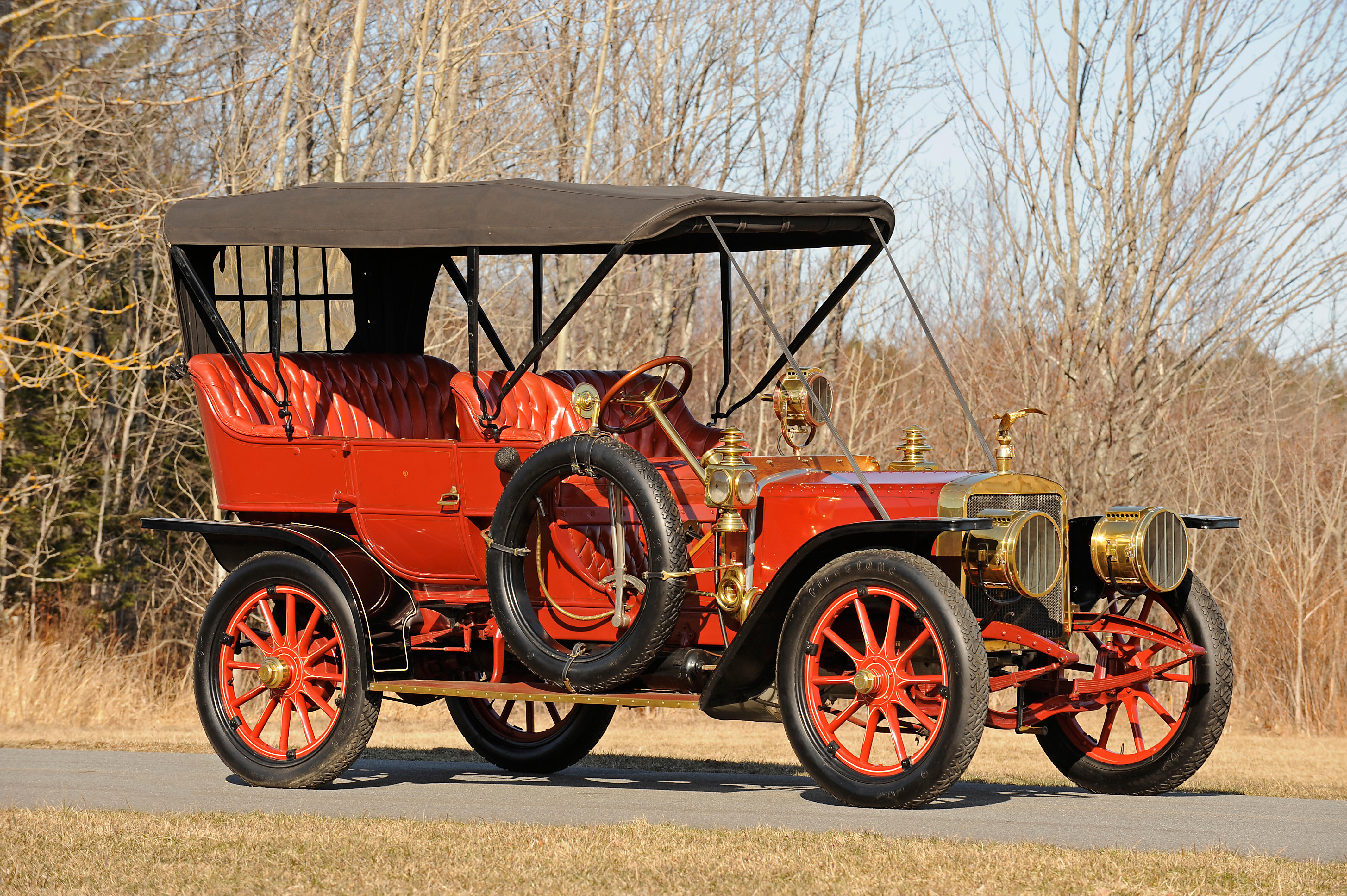
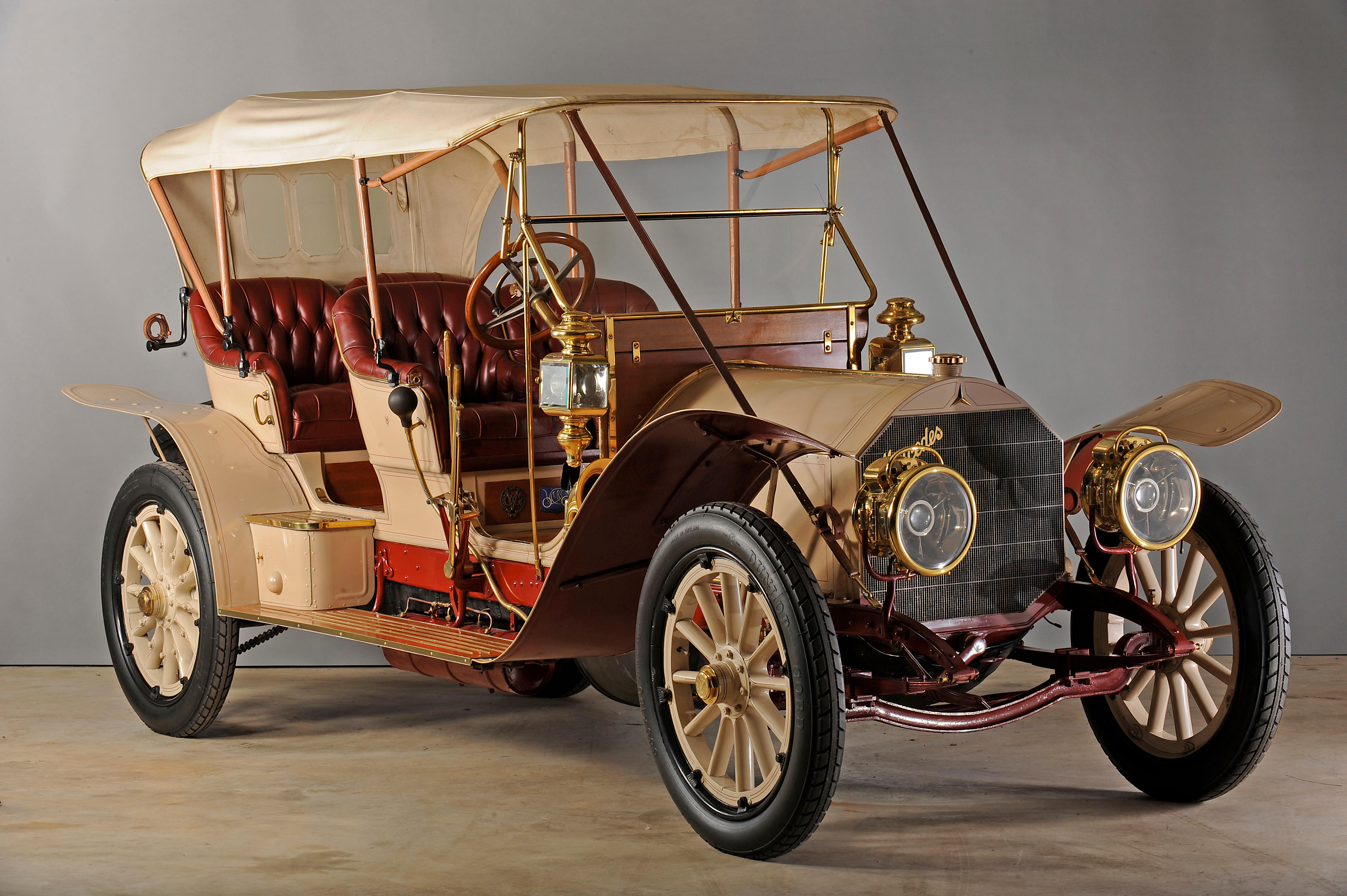
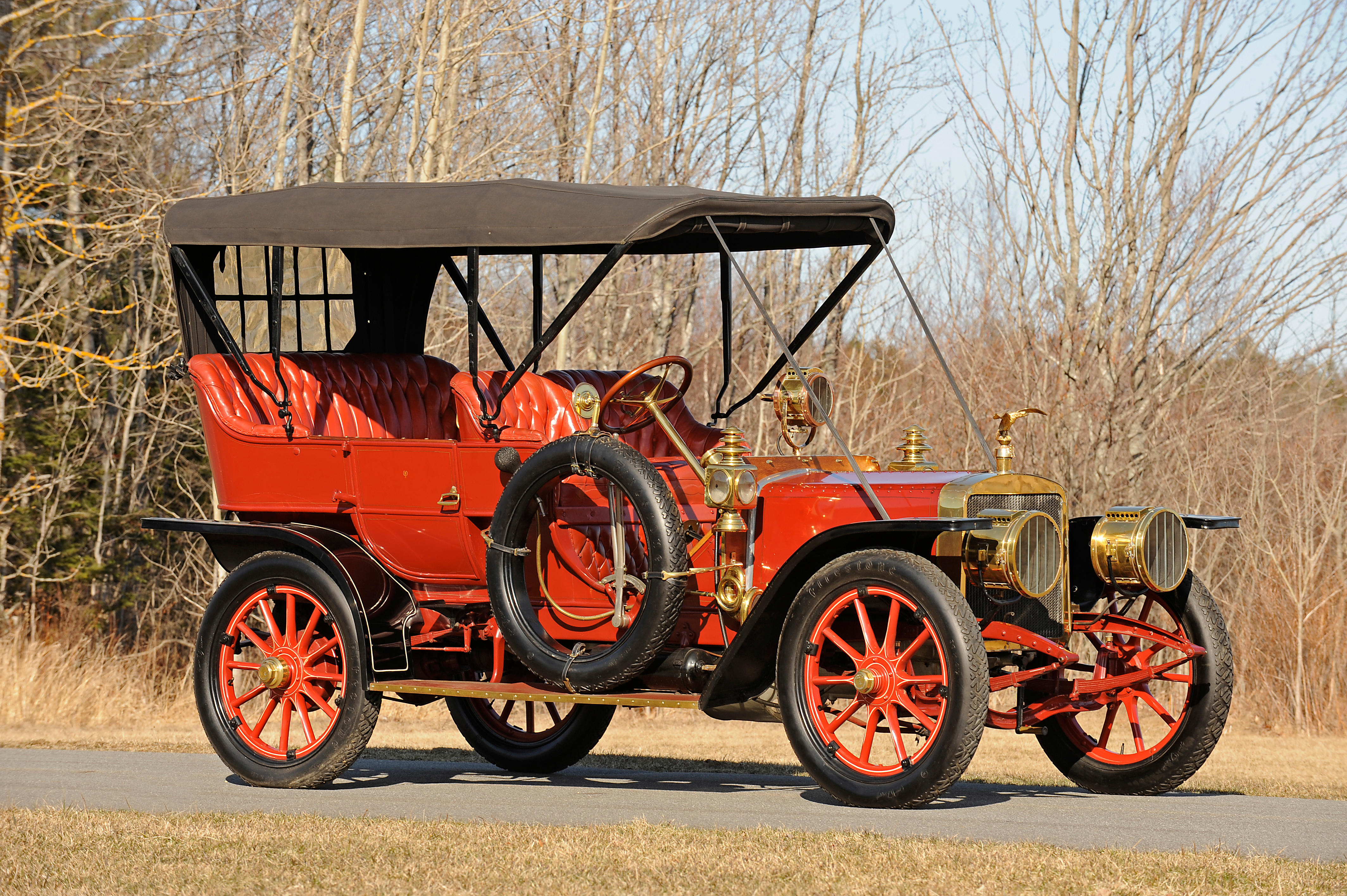


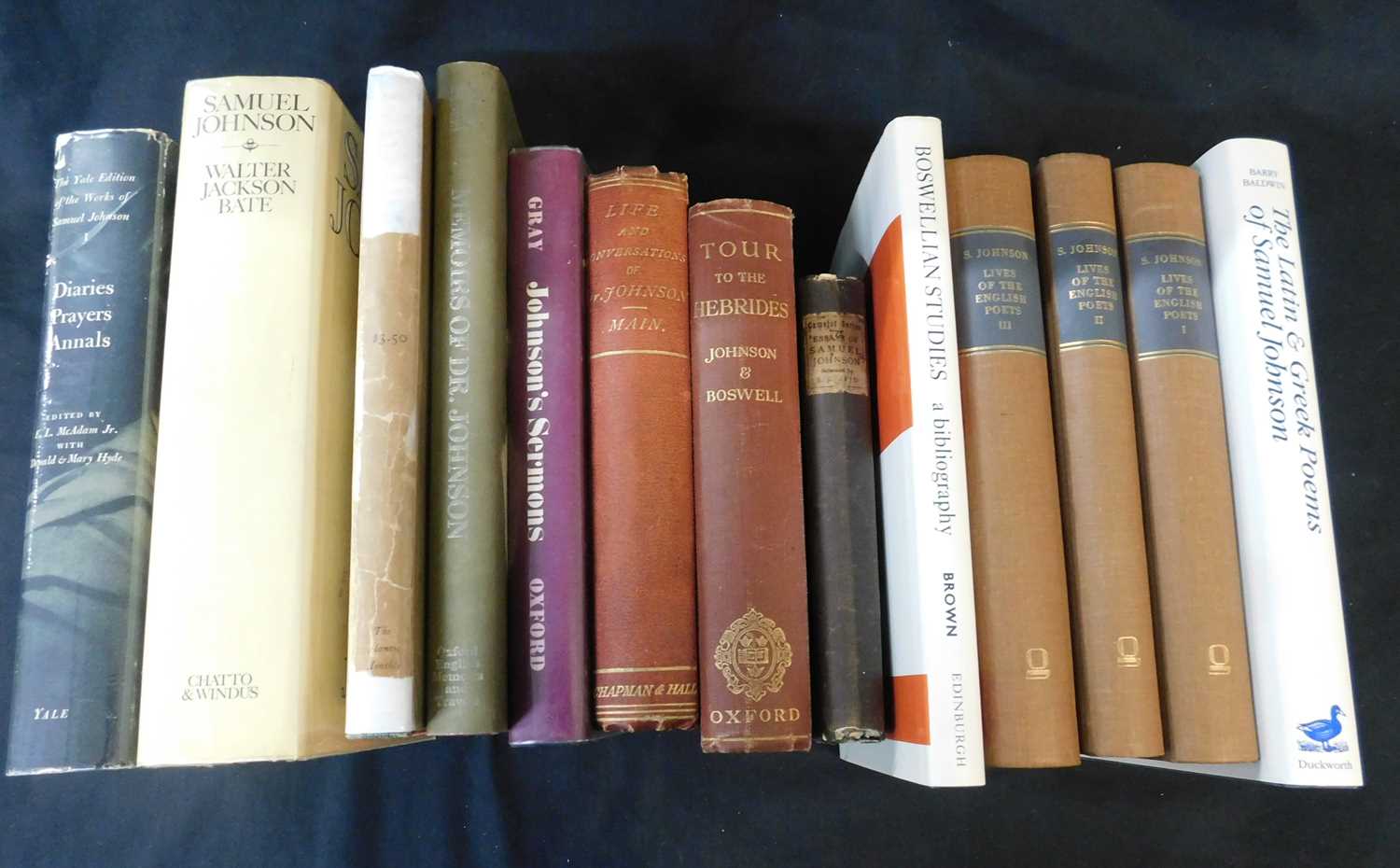
Try LotSearch and its premium features for 7 days - without any costs!
Be notified automatically about new items in upcoming auctions.
Create an alert